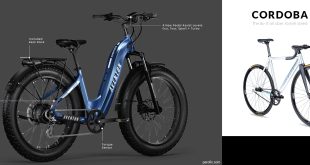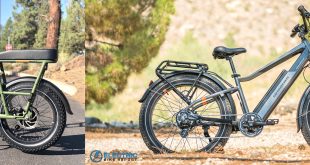Can the Square-1 Cube Test Your Skills?
The Square-1 cube isn’t just another Rubik’s variant—it’s a shapeshifting brain-bender wrapped in geometry, testing both spatial reasoning and adaptability. Whether you’re a cubing newbie or a seasoned solver, this puzzle levels you up—and, believe it or not, sparks the same creative thinking and resilience that makes sustainable e-commuting so empowering. Ready to explore why this cheeky cube deserves your time (and maybe your commute)? Let’s go.
1. What Is the Square-1 Cube?
The Square-1 (also called Back to Square One or Cube 21) is a three-layer twisty puzzle invented in 1990 by Karel Hršel and Vojtěch Kopský :contentReference[oaicite:1]{index=1}. Unlike standard cubes, its top and bottom layers contain kite-shaped “corner” pieces (60° wide) and triangular “edge” pieces (30° wide), with a middle layer made of two trapezoids that form either a square or an irregular hexagon :contentReference[oaicite:2]{index=2}.
What sets it apart? When you scramble it, the Square-1 distorts—its shape warps unpredictably. To reset it, you must return it to cubic form and then match all the colors on each face :contentReference[oaicite:3]{index=3}. And yes, corners and edges can swap places—subverting standard cubing logic and demanding awareness of the entire mechanism, even early in your solve :contentReference[oaicite:4]{index=4}.
2. How Difficult Is It (and Does It Test You?)
Let’s talk numbers and mental gears:
- Complexity Overload: The Square-1 has wow-worthy permutations—over 552 billion possible states when accounting for rotations and reflections :contentReference[oaicite:5]{index=5}.
- Speedcubing Feats: Despite its chaos, world records are blistering—3.41 seconds for a single solve (Ryan Pilat, 2024) and 4.63 seconds average over five solves (Sameer Aggarwal) :contentReference[oaicite:6]{index=6}.
- Shape Complexity: Many say restoring the cube shape is harder than solving color-permutation itself—“the first step…getting it into cube shape…involves memorizing a bunch” :contentReference[oaicite:7]{index=7}.
Yes, Square-1 absolutely tests your skills—visually, analytically, and algorithmically.
3. How to Solve It — Beginner’s Path
Though it looks chaotic, there’s structure. Most solutions follow a layered method, with a classic breakdown:
- 1. Cube-shape the puzzle — get it back into cubic form :contentReference[oaicite:8]{index=8}.
- 2. Orient corners (CO)
- 3. Orient edges (EO)
- 4. Permute corners (CP)
- 5. Permute edges (EP)
- 6. Fix parity—the notorious error from odd permutations :contentReference[oaicite:9]{index=9}.
The shape-changing twist adds flavor—and challenge—to what otherwise resembles layer-by-layer logic and algorithmic sequences.
4. Skill-Level Stories & Community Buzz
- Real Talk: On Reddit, one user admitted: “Square-1 is one of the hardest puzzles to solve without tutorials imo.” :contentReference[oaicite:10]{index=10}.
- Level Up Advice: Another shared, “Practice until you get sub-2 minutes. Learn parity algorithms—and cube shape techniques like Scallop-Scallop and Scallop-Kite.” :contentReference[oaicite:11]{index=11}.
Clearly, this puzzle pushes you—no shortcuts, lots of brain gymnastics, and plenty of rewarding breakthroughs.
5. Why Square-1 Matters Beyond Cubing
At Parofix, we’re cube fans, but we ride e-bikes. Here’s the crossover: tackling Square-1 mirrors how we navigate sustainable urban systems:
- Shape-shifting adaptability: The cube morphs—and so must you when roads change, hills rise, or traffic flows shift.
- Whole-system awareness: Just as every piece on the cube affects every other, good city mobility depends on integrated solutions—not isolated parts.
- Algorithmic thinking + sustainability: Learning parity fixes on a cube sharpens your problem-solving—just like tuning motor assist modes or reading street layouts helps you ride greener and smarter.

6. Future Trends & Innovations
- AR Cubing: Imagine solving a shape-shifting Square-1 projected on your e-bike handlebar—ride while you cube.
- Haptic Digital Cubes: Sensors that let you feel shape shifts—training tactile anticipation—like reading road textures through your tires.
- Geo-linked puzzles: Ride to landmarks to unlock virtual cube challenges—gamifying your urban commute.
7. Tips to Level Up with Square-1
- Tip: Start by mastering cube shape restoration—it sets the stage for everything else.
- Tip: Learn parity algorithms early—you’ll avoid that tiring “scramble and restart” trap.
- Tip: Mix intuitive moves with known algorithms—Cube Master-style learning works wonders :contentReference[oaicite:12]{index=12}.
- Tip: Set time-goals: aim for a 2-minute solve, then 60 seconds. It keeps motivation flowing like pedal-assist.
8. FAQs That Readers Might Ask
Why does the Square-1 change shape?
Because of its mix of kite and triangular pieces and the middle trapezoids—certain turns misalign the layers, letting halves swap and distort the cube :contentReference[oaicite:13]{index=13}.
Is it harder than a 3×3 Rubik’s Cube?
Definitely—especially for beginners. Shape-shifting adds an entirely new layer of complexity, demanding foresight from move one :contentReference[oaicite:14]{index=14}.
What’s parity, and how do I fix it?
Parity arises when one layer needs an odd swap and the other even—algorithmic fixes exist (e.g. a 6-cycle trick) to correct things without full resets :contentReference[oaicite:15]{index=15}.
Can this puzzle benefit e-bike riders?
Yes! The adaptability, strategic planning, and patience nurtured by the Square-1 echo the mindset needed for smart, sustainable riding decisions.
9. Final Thoughts
Yes, the Square-1 cube absolutely tests your skills—visually, algorithmically, and mentally. It’s not just a puzzle, but a shape-shifting challenge that builds adaptability and structured thinking. Whether you’re solving virtual rides or real-life commutes, that mindset is gold in both worlds.
So grab a Square-1, twist, shape, solve—and let it sharpen your brain while you gear up for greener, smarter rides. Now go ride smart—and cube smarter.
::contentReference[oaicite:16]{index=16}
 Electric Bike & Bicycle Repair Hub Master DIY electric and traditional bike repairs with practical tips and trusted product recommendations.
Electric Bike & Bicycle Repair Hub Master DIY electric and traditional bike repairs with practical tips and trusted product recommendations.



